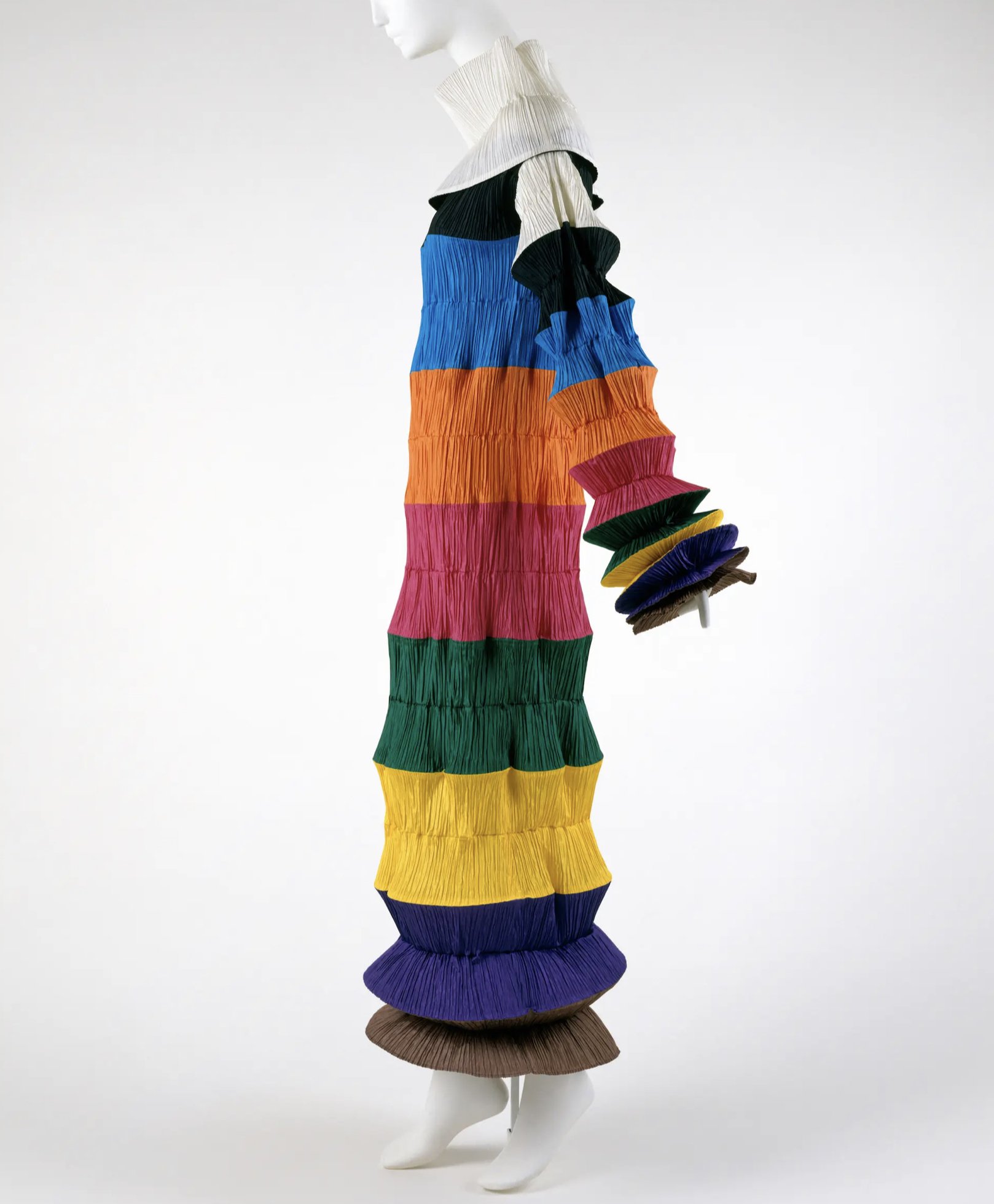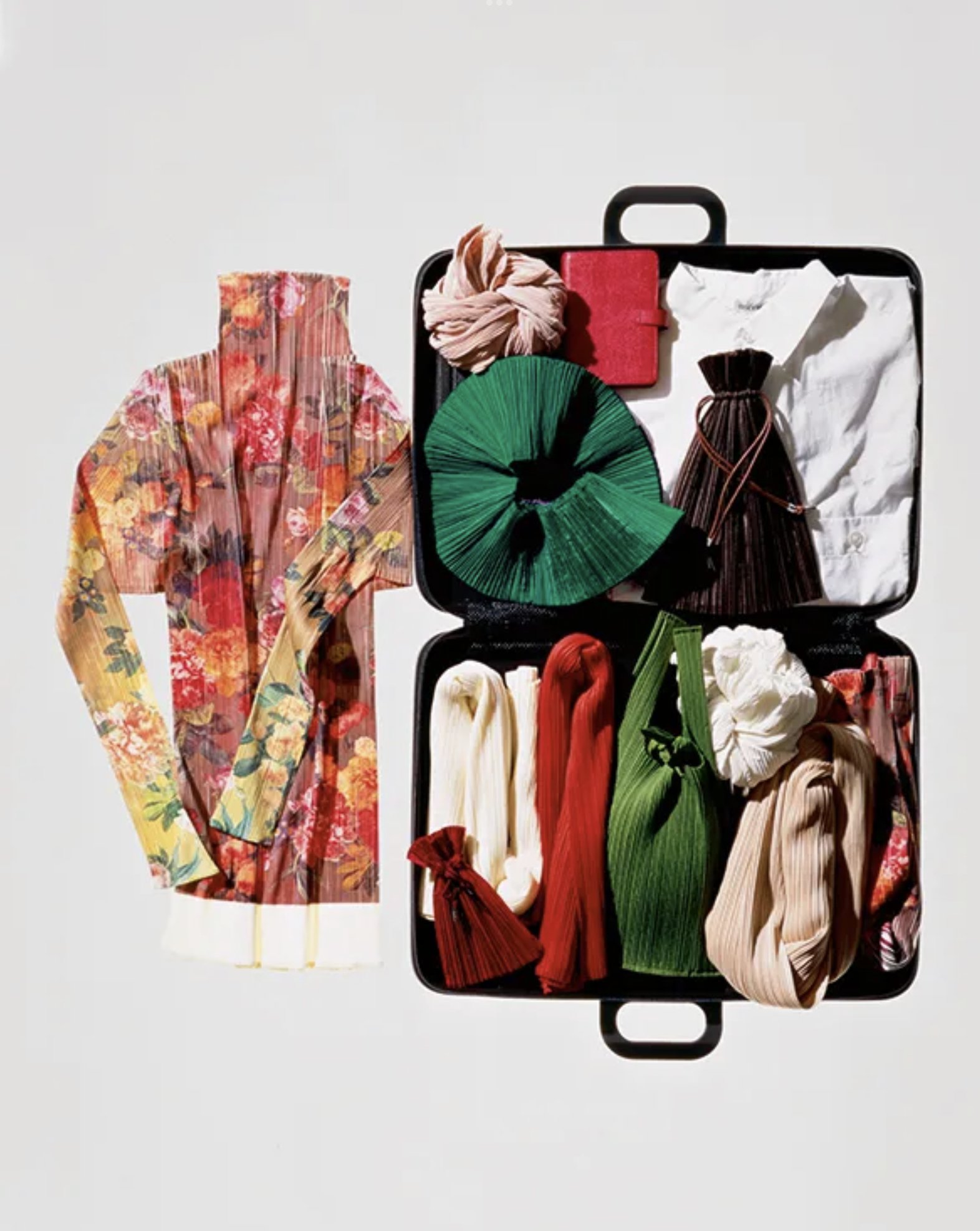Issey Miyake, a One of a Kind Innovator that Transformed Fashion Forever
Few designers truly leave an everlasting legacy, Issey Miyake was one of them. Sadly, on august 5th the Japanese designer passed at the ripe age of 85 after battling cancer. The celebrated artist will forever be remembered, a one of a kind designer that utilized technology, art and architecture fissioning them to create fashion masterpieces.
Courtesy of Vogue
Miyake, through fashion, intertwined traditional Japanese dress with cubist art, giving the world the most fascinating pleated garments. He was one of the first designers that saw the body and its silhouette for what it could be, not what it should be. He transformed the body by dressing it with granice, origami—like silhouettes. Prioritizing movement, function and comfort all while pushing the traditional and expected boundaries of haute couture. May fashions true innovator and absolute creative genius Rest In Peace.
Issey Miyake is one in a generation, he completely transformed fashion and introduced the east to the west in a way that became so viral and appreciated that his works, as said before, will forever continue to be appreciated. He was born in Hiroshima in 1938, which unfortunately means that he was present when the Atomic Bomb was dropped. An event that changed and marked his life. He was able to attend college and graduated in 1965 from the Tama Art University in Tokyo, he majored in graphic design, in the middle of the Art Deco era. He proceeded to go to Paris, a move inspired after Kenzo Takada, a fellow Japanese designer, gained success in Europe.
Courtesy of Vogue
In Paris, he worked under couturier Guy Laroche and two short years later became an apprentice at Givenchy working directly with Hubert (I mean can it get better than that?). After his learnings in the west, he returned home and funded the Miyake Design Studio. Publications and departing stores took notice of his work and Bloomingdale’s offered the designer a small section at their stores.
The word was captivated by Issey’s use of Japanese tattoos in his designs and his sashiko implementation in embroiled coats. With his new design house he went on to become an official member of the French pret-a-porter organization.
Miyake’s work laid the foundation for avant-garde designs in Paris and worldwide. Along Asian designers, Kawakubo and Yamamoto, this triad without it being their intention established a new school of Japanese design, introducing Europe to a whole new fashion scene and movement.
Issey Miyake’s true innovation was that he saw clothes different to how fashion saw it at his time. He blended the line between fashion and art, he was completely taken aback by technology and how it could morph with the human body. The world was obsessed with haute couture in the mid 20th century, then Miyake came and turned the table. A designer who was openly against couture and its excessive, elitist prices. He gave the world innovation through simplistic, minimalistic, well thought out clothes that were functional, comfortable and free from form. Here is where his true genius lies, the fact that he saw clothing as a system of philosophy that should allow free movement to the body.
Courtesy of Met Museum
All his designs were based on experimentation, in textile and pattern making. Creating garments that were up to the wearer to use as they please, giving them creative control as his clothes can be worn in multiple ways. Unlike the traditional silhouette aimed at the west, he introduced a completely loose, wide and with minimum details line.
It might seem a little obvious that in order to gain attention one must do the opposite as too much is being done, but Miyake’s work was done under a solid philosophy and design process. The sweepingly oversized proportions could be worn by both men and women, one of the first to pioneer in genderless fashion. His collection, Plantation, was launched in 1981 and it was not targeted to a specific gender or body size.
However, it was his revolutionary textile technique that really set Issey’s work apart. In collaboration with his textile director, Minagawa, they created their studio's most popular collection; Pleats Please from 1993. Pleats were not a new thing but the way Issey did it was, in true innovator form he started out by cutting the fabric 3x bigger than the proper size, then assembled it, ironed it and sewed it. Finally the garment was placed between sheets of papers and pressed, giving it the iconic permanent pleats. Another project that shows his innovative spirit is the A-POC project. This new technique revolutionized the way mass production is made, clothes are sewn from a single thread and sinned into a tubular fabric which is then cut-out. (Sort of like the old paper dolls). Check out the impressive process at Issey Miyake's official site.
His designs surely surpassed him, even after he left his seat as director in 1999, he is forever immortalized through his Floating Dresses from 2020, his unmatched 132 5 collection, his origami based structures and honestly everything else he designed.
Courtesy of Vogue
Leave it to Issey Miyake to design the uniform of the billionaires. He made a fashion icon out of someone who cleaned wasn’t supposed to be one. The mastermind behind Steve Jobs iconic turtlenecks was Miyake. A modern and timeless piece that became synonymous to the Apple corporation and aesthetic.
An important part of the visual aspect of Issey Miyake’s work is his unbreakable relationship with photographer Irving Penn. an artistic duo that understood each other so that neither Penn attended Issey’s shows and Issey wasn’t present at Penn’s shoots. They trusted each other and relied on their creative takes to enrich each other’s work.
French magazine, Le Monde 2, said it best, his studio was not a house of couture but rather a laboratory of experimentation, unparalleled to anything else that was being done.
A genre-crossing designer that developed shape-shifting clothes that transcend trends, gender and any traditional norm. A visionary that understood the importance of handcraft and innovation. Everything was rooted in his belief of one-cloth philosophy and the endless exploration of the relationship between clothes and body. His futuristic visionary thinking was deeply rooted in tradition and technology giving the world true design.























